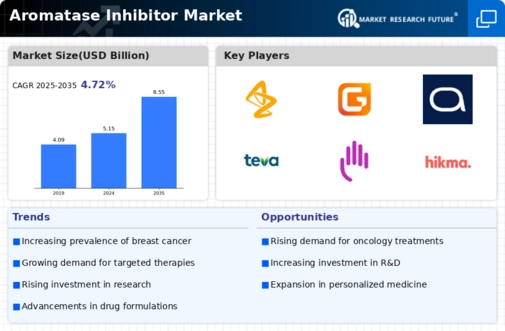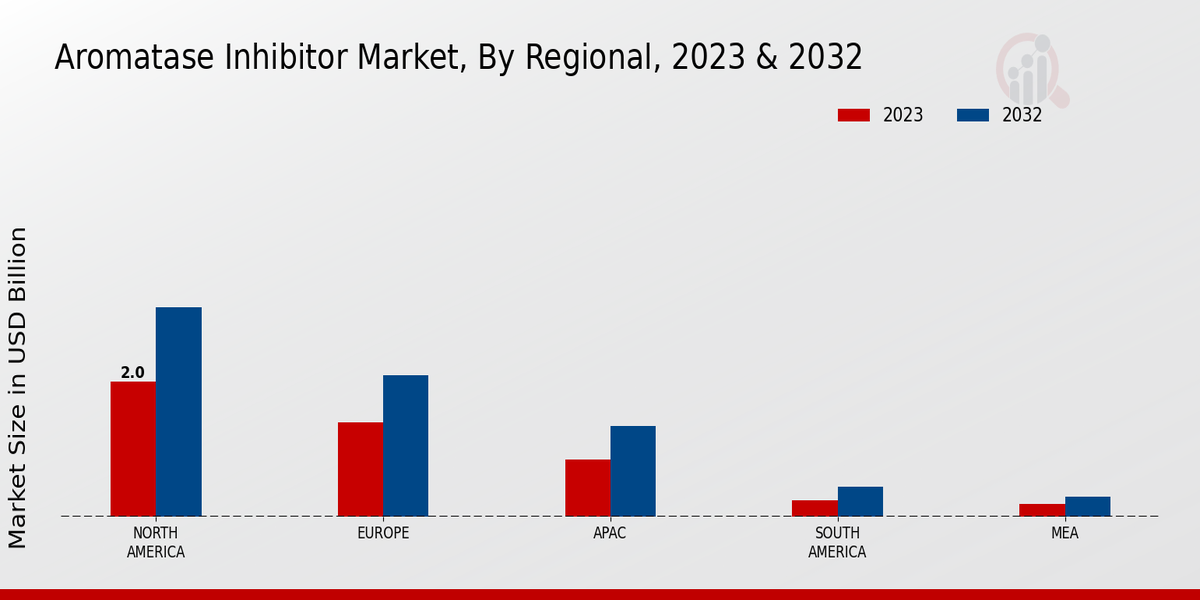Market Growth Projections
The Global Aromatase Inhibitor Market Industry is projected to experience substantial growth over the coming years. With a market value of 5.15 USD Billion in 2024, it is anticipated to reach 8.55 USD Billion by 2035. This growth trajectory indicates a compound annual growth rate (CAGR) of 4.71% from 2025 to 2035, highlighting the increasing demand for aromatase inhibitors in breast cancer treatment. The market dynamics are influenced by various factors, including rising cancer incidence, advancements in drug development, and regulatory support.
Advancements in Drug Development
Innovations in drug development are significantly impacting the Global Aromatase Inhibitor Market Industry. The introduction of new formulations and delivery methods enhances the efficacy and tolerability of existing aromatase inhibitors. For instance, the development of combination therapies that include aromatase inhibitors alongside other agents has shown promising results in clinical trials. These advancements not only improve patient outcomes but also expand the market potential. By 2035, the market is expected to grow to 8.55 USD Billion, driven by these ongoing innovations in treatment strategies.
Aging Population and Hormonal Changes
The aging population is a crucial driver for the Global Aromatase Inhibitor Market Industry, as the risk of developing hormone-receptor positive breast cancer increases with age. As women age, hormonal changes lead to a higher incidence of estrogen-sensitive cancers. This demographic shift necessitates effective treatment options, including aromatase inhibitors, which are specifically designed for postmenopausal women. The growing number of older women is expected to significantly impact market dynamics, further solidifying the role of aromatase inhibitors in cancer therapy.
Increasing Awareness and Screening Programs
The Global Aromatase Inhibitor Market Industry benefits from heightened awareness and screening initiatives aimed at early detection of breast cancer. Educational campaigns and public health programs are encouraging women to undergo regular screenings, leading to earlier diagnoses and increased treatment uptake. This proactive approach is likely to result in a higher demand for aromatase inhibitors, as patients seek effective management options. As awareness continues to grow, the market is poised for sustained growth, contributing to the projected CAGR of 4.71% from 2025 to 2035.
Regulatory Support and Approval for New Therapies
Regulatory bodies are increasingly supportive of the Global Aromatase Inhibitor Market Industry, facilitating the approval of new therapies and treatment protocols. Streamlined approval processes for innovative aromatase inhibitors and combination therapies are encouraging pharmaceutical companies to invest in research and development. This regulatory environment not only fosters innovation but also ensures that patients have access to the latest treatment options. As a result, the market is likely to expand, reflecting the ongoing commitment to improving cancer care and patient outcomes.
Rising Incidence of Hormone-Receptor Positive Breast Cancer
The Global Aromatase Inhibitor Market Industry is experiencing growth due to the increasing incidence of hormone-receptor positive breast cancer. This type of cancer, which is sensitive to estrogen, has seen a rise in diagnoses, prompting a greater demand for effective treatment options. Aromatase inhibitors, which reduce estrogen levels, are becoming a standard therapy for postmenopausal women with this condition. As of 2024, the market is projected to reach 5.15 USD Billion, reflecting the urgent need for innovative therapies to address this growing health concern.
























Leave a Comment